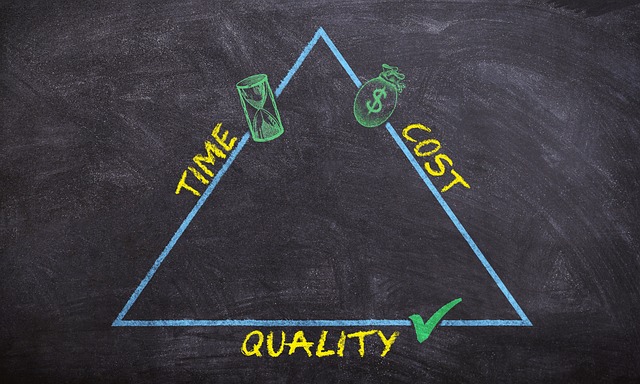Applied Calculus
Topic outline
-
Welcome to Applied Calculus [CMAT 2103]!
Course Introduction
This Applied Calculus [CMAT 2103] course adheres to the scope and sequence of a one-semester Applied Calculus course. The course description provided is the from the statewide common course information.
Course Description: An introduction to differential and integral calculus, with an emphasis on applications, designed primarily for business, economics, and social sciences. Topics include limits, the first and second derivative, the first and second derivative tests for relative extrema; exponential and logarithmic functions; the definite and indefinite integral, and the Fundamental Theorem of Calculus. Calculus will be used to solve real world applications. (This course is not equivalent to Calculus I and does not serve as a prerequisite for Calculus II.)Upon successful completion of this course, the student will be able to:
- Review exponents, graphs, and functions from Algebra.
- Apply the concepts of limits and continuity to functions.
- Interpret the derivative as a slope of the tangent line and an instantaneous rate of change.
- Find the derivative of functions, including determining the tangent line to the function at a specific given point, and relate to the concept of rate of change.
- Apply the first and second derivative tests to locate relative extrema.
- Describe the relation between definite integrals and areas between the graph and the horizontal axis.
- Use techniques of integration to find particular or general antiderivatives.
- Apply the Fundamental Theorem of Calculus to evaluate definite integrals.
- Solve applied problems involving business, economics, and the social sciences.
Adopting instructors can embed a welcome video or add additional text here.
Structure of the Course
The course includes 5 content Modules which covers each of the 4 chapters in the textbook (provided link). Each module includes a brief introduction text with module learning objectives, links to the corresponding Pressbook sections, additional resources (videos), homework assignments in MyOpenMath, Chapter Review Exercises from the Pressbook, a Quiz in MyOpenMath, and a Q&A discussion forum for that Module. There are additional modules for smaller Exams, a Midterm Exam, and/or Final Exam.
Navigating the Course
This course is set up in Modules covering various topics which may be accessed from the course navigation menu on the left or by scrolling below. Modules may be collapsed in the menu and it the body of the course to minimize scrolling. Many items are required and may be marked as completed automatically when the activity has been submitted (the broken check box), but others will marked as done by the student (the solid check box).
Please move through the items below and continue through the Learner Support and Getting Started modules before moving on to Module 1. Be sure to check for announcements and due dates to stay on track.Adopting instructors can embed a navigation video or add additional text here.
 This course and its contents, developed by author: Jared Eusea, and editors/reviewers: Bimal Kunwor and Karen Perilloux, are licensed under a Creative Commons Attribution 4.0 International License by LOUIS: The Louisiana Library Network, except where otherwise noted.
This course and its contents, developed by author: Jared Eusea, and editors/reviewers: Bimal Kunwor and Karen Perilloux, are licensed under a Creative Commons Attribution 4.0 International License by LOUIS: The Louisiana Library Network, except where otherwise noted. Adopting instructors should edit the About Your Instructor and Office Hours Information pages in this Module.
-
Adopting instructors should edit all pages in this Module - as per their own Institution's policies.
-
This module contains all the items you should review and complete before you begin Module 1. Before moving on, be sure to:
- Check the News and Announcements Forum
- Read the Course Syllabus
- Introduce yourself to the class
- Read the instructions for the Q & A Forum
Good luck in the course!-
Use this forum to tell us a little about yourself and your interests. Some topic ideas:
- What is your field of study/research interest or concentration?
- What are you most interested in learning about in this class and why?
- Have you ever taken an online class before?
- Any other information you would like to share with your classmates, such as special interests or activities.
Post a picture! We look forward to meeting you.
-
Use this forum to ask your instructor any questions you have about the course. You may post at any time, and your instructor will respond here. Be as specific as possible.
Please keep in mind that others can see your posts, so do not post any personal information. If you have questions about your grade, please email your instructor directly. You can expect a response to posts and emails within [X] hours. [Recommendation is 24 hours M-F, next business day on weekends.]
Subscription should be set to Auto.
- Check the News and Announcements Forum
-

In the past few years, major earthquakes have occurred in several countries around the world. In January 2010, an earthquake of magnitude 7.3 hit Haiti. A magnitude 9 earthquake shook northeastern Japan in March 2011. In April 2014, an 8.2-magnitude earthquake struck off the coast of northern Chile. What do these numbers mean? In particular, how does a magnitude 9 earthquake compare with an earthquake of magnitude 8.2? Or 7.3?
Later in this chapter, we show how logarithmic functions are used to compare the relative intensity of two earthquakes based on the magnitude of each earthquake (see "Chapter Opener: The Richter Scale for Earthquakes" Example in Section 1.8: Logarithmic Functions).
Calculus is the mathematics that describes changes in functions. In this chapter, we review all the functions necessary to study calculus. We define polynomial, rational, exponential, and logarithmic functions. We review how to evaluate these functions, and we show the properties of their graphs. We provide examples of equations with terms involving these functions and illustrate the algebraic techniques necessary to solve them. In short, this chapter provides the foundation for the material to come. It is essential to be familiar and comfortable with these ideas before proceeding to the formal introduction of calculus in the next chapter.
Image Caption: A portion of the San Andreas Fault in California. Major faults like this are the sites of most of the strongest earthquakes ever recorded. (credit: modification of work by Robb Hannawacker, NPS)
(Content & Image Source: Chapter 1 Introduction, Calculus Volume 1, Gilbert Strang and Edwin "Jed" Herman, OpenStax, CC BY-NC-SA License)
Upon completion of this module, you will be able to:Section 1.1 Function
- Find function values.
- Graph functions and determine whether or not a graph is a function.
- Find the domain and range of the function.
Section 1.2 Operations on Functions
- Find the composition of the function using formulas and table
- Graph functions using vertical and horizontal shifts.
- Graph functions using reflections about the x-axis and the y-axis.
- Graph functions using compressions and stretches.
- Combine transformations.
Section 1.3 Linear Functions
- Graph equations of the types y= f(x)=b+mx, y= c and x=a
- Graph linear functions
- Find an equation of a line when given its slope and one point on the line and when given two points on the line
- Solve applied problems involving slope and linear functions.
Section 1.4 Exponents
- Simplifying exponential expressions involving rational and integer exponents
- Simplifying radical expressions
Section 1.5 Quadratics
- Learn basic concepts and different forms of a quadratic function and their graphs
- Solve problems involving quadratic equations
Section 1.6 Polynomials and Rational Functions
- Identify power functions.
- Identify end behavior of power functions.
- Identify polynomial functions.
- Identify the degree and leading coefficient of polynomial functions.
Section 1.7 Exponential Functions
- Evaluate exponential functions.
- Find the equation of an exponential function.
- Use compound interest formulas.
- Evaluate exponential functions with base e.
Section 1.8: Logarithmic Functions
- Convert from logarithmic to exponential form.
- Convert from exponential to logarithmic form.
- Evaluate logarithms.
- Use common logarithms.
- Use natural logarithms.
To achieve these objectives:- Read the Module 1 Introduction (see above).
- Read Sections 1.1 - 1.8 of Chapter 1: Algebra Review in Applied Calculus (links to each Section provided below)
- At the end of each Section there is a list of Vocabulary, a Self Check Quiz, and a set of Flashcards
- At the end of each Section there is a list of Vocabulary, a Self Check Quiz, and a set of Flashcards
- Watch the Videos for each Section (links provided below)
- Complete the MyOpenMath Homework Assignments for each Section (links provided below) - These are graded!
- Practice the problems on the Chapter 1 Review Exercises, checking the solutions provided (link provided below)
- Complete the MyOpenMath Quizzes for Chapter 1 (link provided below) - These are graded!
- Once you complete the Quizzes, upload your work in the Quiz Work Upload Assignment using the submission link below.
- Post in the Chapter 1 Q&A Discussion Forum - link provided below.
Note the check boxes to the right that help you track your progress: some are automatic, and some are manual.
Module Pressbooks Resources and Activities
You will find the following resources and activities in this module at the Pressbooks website. Click on the links below to access or complete each item.
-
 In this module you will take your Exam 1 .
In this module you will take your Exam 1 . Read the Exam 1 Information and Instructions page carefully and take note of any special submission guidelines.
Upon completion of this module, you will have:- Read and viewed the Exam 1 Information and Instructions page
- Scheduled your exam with the proctoring service [if applicable, delete if not needed]
- Post in the Exam 1 Q&A Discussion Forum - link provided below.
- Prepared for and submitted your Exam 1 [revise as needed]
- Uploaded your work in the Exam 1 Work Upload Assignment using the submission link below.
Attribution of image: ("Math, Numbers, Number image. Free for use." Pixabay.com. https://pixabay.com/photos/math-numbers-number-counting-5247958/)
Adopting instructors: Edit the Exam 1 Information and Instructions page.
-

Science fiction writers often imagine spaceships that can travel to far-off planets in distant galaxies. However, in 1905, Albert Einstein showed that a limit exists on how fast any object can travel. The problem is that the faster an object moves, the more mass it attains (in the form of energy). What is this speed limit? (see "Chapter Opener: Einstein's Equation" Example in Section 2.1: Limits).
The idea of a limit is central to all of calculus. We begin this chapter by examining why limits are so important. Then, we go on to describe how to find the limit of a function at a given point.
Not all functions have limits at all points, and we discuss what this means and how we can tell if a function does or does not have a limit at a particular value. This chapter has been created in an informal, intuitive fashion.
Image Caption: The vision of human exploration by the National Aeronautics and Space Administration (NASA) to distant parts of the universe illustrates the idea of space travel at high speeds. But, is there a limit to how fast a spacecraft can go? (credit: NASA)
(Content & Image Source: Chapter 2 Introduction, Calculus Volume 1, Gilbert Strang and Edwin "Jed" Herman, OpenStax, CC BY-NC-SA License)
Upon completion of this module, you will be able to:Section 2.1: Limits and ContinuityTo achieve these objectives:- Calculate the limit of a function using tables and graph
- Identify and give examples where a limit doesn't exist for a function
- Describe the relationship between one-sided limits, two-sided limits, and continuity.
- State the conditions for the continuity of a function.
- Read the Module 2 Introduction (see above).
- Read Section 2.1 of Chapter 2: Limits and Continuity in Applied Calculus (link provided below)
- At the end of this Section there is a list of Vocabulary, a Self Check Quiz, and a set of Flashcards
- At the end of this Section there is a list of Vocabulary, a Self Check Quiz, and a set of Flashcards
- Watch the Videos for each Section (links provided below)
- Complete the MyOpenMath Homework Assignments for the Section (link provided below) - These are graded!
- Practice the problems on the Chapter 2 Review Exercises - Limits, checking the solutions provided (link provided below)
- Complete the MyOpenMath Quiz for Section 2.1 (link provided below) - This is graded!
- Once you complete the Quiz, upload your work in the Quiz Work Upload Assignment using the submission link below.
- Post in the Section 2.1 Q&A Discussion Forum - link provided below.
Note the check boxes to the right that help you track your progress: some are automatic, and some are manual.Module Pressbooks Resources and Activities
You will find the following resources and activities in this module at the Pressbooks website. Click on the links below to access or complete each item.
-

The Hennessey Venom GT is one of the fastest cars in the world. In 2014, it reached a record-setting speed of 270.49 mph. It can go from 0 to 200 mph in 14.51 seconds. The techniques in this chapter can be used to calculate the acceleration the Venom achieves in this feat (see "Chapter Opener: Estimating Rate of Change of Velocity" Example in Section 2.2: The Derivatives).
Calculating velocity and changes in velocity are important uses of calculus, but it is far more widespread than that. Calculus is important in all branches of mathematics, science, and engineering, and it is critical to analysis in business and health as well.
In this chapter, we explore one of the main tools of calculus, the derivative, and show convenient ways to calculate derivatives. We apply these rules to a variety of functions in this chapter so that we can then explore applications of these techniques.
Image Caption: The Hennessey Venom GT can go from 0 to 200 mph in 14.51 seconds. (credit: modification of work by Codex41, Flickr)
(Content & Image Source: Chapter 3 Introduction, Calculus Volume 1, Gilbert Strang and Edwin "Jed" Herman, OpenStax, CC BY-NC-SA License)
Upon completion of this module, you will be able to:
Section 2.2: The Derivatives
- Define velocity as a rate of change
- Calculate the average rate of change of a function, distinguish it from the instantaneous rate of change, and explain their relationships with secant and tangent lines.
- Describe the derivative as the limit of a difference quotient and the slope of the tangent line to the graph of the function at the point.
- Calculate the derivative of a given function at a specific point using limits.
Section 2.3: The Power and Sum Rules for Derivatives
- State the constant, constant multiple, and power rules.
- Apply the sum and difference rules to combine derivatives.
- Compute the derivative of ex
- Find equations of tangent lines
- Solve applications with the derivative
Section 2.4: Product and Quotient Rules
- Use the Product and Quotient Rules to find derivatives
- Solve applications with the derivative
Section 2.5: Chain Rule- Use the Chain Rule to find derivatives
- Solve applications with the derivative
- Describe the relationship between differentiable and continuity
To achieve these objectives:- Read the Module 3 Introduction (see above).
- Read Sections 2.2 - 2.5 of Chapter 2: Limits and The Derivative in Applied Calculus (links to each Section provided below)
- At the end of this Section there is a list of Vocabulary, a Self Check Quiz, and a set of Flashcards
- At the end of this Section there is a list of Vocabulary, a Self Check Quiz, and a set of Flashcards
- Watch the Videos for each Section (links provided below)
- Complete the MyOpenMath Homework Assignments for each Section (links provided below) - These are graded!
- Practice the problems on the Chapter 2 Review Exercises - The Derivative, checking the solutions provided (link provided below)
- Complete the MyOpenMath Quizzes for Chapter 2 (link provided below) - These are graded!
- Once you complete the Quizzes, upload your work in the Quiz Work Upload Assignment using the submission link below.
- Post in the Chapter 2 Q&A Discussion Forum - link provided below.
Note the check boxes to the right that help you track your progress: some are automatic, and some are manual.
Module Pressbooks Resources and Activities
You will find the following resources and activities in this module at the Pressbooks website. Click on the links below to access or complete each item.
-
 In this module you will take your Midterm Exam or Exam 2.
In this module you will take your Midterm Exam or Exam 2. Read the Midterm Exam or Exam 2 Information and Instructions page carefully and take note of any special submission guidelines.
Upon completion of this module, you will have:- Read and viewed the Midterm Exam or Exam 2 Information and Instructions page
- Scheduled your exam with the proctoring service [if applicable, delete if not needed]
- Post in the Midterm Exam or Exam 2 Q&A Discussion Forum - link provided below.
- Prepared for and submitted your Midterm Exam or Exam 2 [revise as needed]
- Uploaded your work in the Midterm Exam or Exam 2 Work Upload Assignment using the submission link below.
Attribution of image: ("Math, Numbers, Number image. Free for use." Pixabay.com. https://pixabay.com/photos/math-numbers-number-counting-5247958/)Adopting instructors: Edit the Midterm Exam or Exam 2 Information and Instructions page.
-

In business, companies are interested in maximizing revenue. Consider a scenario in which a company has collected data on how many cars it is able to lease, depending on the price it charges its customers to rent a car. The company would then use the data to determine the price the company should charge to maximize the amount of money it brings in (see "Chapter Opener: Maximizing Revenue" Example in Section 3.4: Applied Optimization).
Being able to solve this type of problem is just one application of derivatives introduced in this chapter. We also look at how derivatives are used to find the maximum and minimum values of a function. As a result, we will be able to solve applied optimization problems, such as maximizing revenue and minimizing cost for certain area. In addition, we examine how derivatives are used to provide accurate graphs of functions and solve problems that involve two related quantities that change over time.
Image Caption: A triangle showing the connection of time, cost, and quality. (Image Source: "Triangle, Quality, Time image.", Pixabay, Creative Commons Zero (CC0) license)
(Content Source: Chapter 4 Introduction and 4.7 Applied Optimization Problems, Calculus Volume 1, Gilbert Strang and Edwin "Jed" Herman, OpenStax, CC BY-NC-SA License)
Upon completion of this module, you will be able to:Section 3.1: Second Derivative and Concavity- Describe how the second derivative of a function relates to its concavity and how to apply the second derivative test.
- Describe the relationship between inflection points and concavity and how to find the inflection points of a function.
Section 3.2: Optimization- Formulate a real-world problem as a mathematical function that requires optimization.
- Utilize optimization techniques to identify the absolute extrema (minimum and/or maximum) of a given function.
- Using the First Derivative Test to find local extremes.
- Using the Second Derivative Test to find local extremes.
Section 3.3: Curve Sketching- Use first derivative information to find intervals where graphs are increasing, decreasing, or constant.
- Use second derivative information to determine concavity.
- Use the information about first and second derivatives to graph functions
Section 3.4: Applied Optimization- Solve minimum-maximum problems using calculus
Section 3.5: Other Applications- Use tangent line approximation to solve problems
- Calculate and interpret elasticity of demand
Section 3.6: Implicit Differentiation and Related RatesTo achieve these objectives:- Differentiate implicitly.
- Solve related-rate problems.
- Read the Module 4 Introduction (see above).
- Read Sections 3.1 - 3.6 of Chapter 3: Applications of the Derivative in Applied Calculus (links to each Section provided below)
- At the end of this Section there is a list of Vocabulary, a Self Check Quiz, and a set of Flashcards
- At the end of this Section there is a list of Vocabulary, a Self Check Quiz, and a set of Flashcards
- Watch the Videos for each Section (links provided below)
- Complete the MyOpenMath Homework Assignments for each Section (links provided below) - These are graded!
- Practice the problems on the Chapter 3 Review Exercises, checking the solutions provided (link provided below)
- Complete the MyOpenMath Quizzes for Chapter 3 (link provided below) - These are graded!
- Once you complete the Quizzes, upload your work in the Quiz Work Upload Assignment using the submission link below.
- Post in the Chapter 3 Q&A Discussion Forum - link provided below.
Note the check boxes to the right that help you track your progress: some are automatic, and some are manual.Module Pressbooks Resources and Activities
You will find the following resources and activities in this module at the Pressbooks website. Click on the links below to access or complete each item.
-
 In this module you will take your Exam 2 or Exam 3. [revise as needed]
In this module you will take your Exam 2 or Exam 3. [revise as needed]Read the Exam 2 or Exam 3 Information and Instructions page carefully and take note of any special submission guidelines.
Upon completion of this module, you will have:- Read and viewed the Exam 2 or Exam 3 Information and Instructions page
- Scheduled your exam with the proctoring service [if applicable, delete if not needed]
- Post in the Exam 2 or Exam 3 Q&A Discussion Forum - link provided below.
- Prepared for and submitted your Exam 2 or Exam 3 [revise as needed]
- Uploaded your work in the Exam 2 or Exam 3 Work Upload Assignment using the submission link below.
Attribution of image: ("Math, Numbers, Number image. Free for use." Pixabay.com. https://pixabay.com/photos/math-numbers-number-counting-5247958/)
Adopting instructors: Edit the Exam 2 or Exam 3 Information and Instructions page.
-

Iceboats are a common sight on the lakes of Wisconsin and Minnesota on winter weekends. Iceboats are similar to sailboats, but they are fitted with runners, or “skates,” and are designed to run over the ice, rather than on water. Iceboats can move very quickly, and many ice boating enthusiasts are drawn to the sport because of the speed. Top iceboat racers can attain speeds up to five times the wind speed. If we know how fast an iceboat is moving, we can use integration to determine how far it travels. We revisit this question later in the chapter (see "Chapter Opener: Iceboats" Example in Section 4.5: Average Value and The Net Change Theorem).
Determining distance from velocity is just one of many applications of integration. In fact, integrals are used in a wide variety of mechanical and physical applications. In this chapter, we first introduce the theory behind integration and use integrals to calculate areas. From there, we develop the Fundamental Theorem of Calculus, which relates differentiation and integration. We then study some basic integration techniques and briefly examine some applications.
Image Caption: Iceboating is a popular winter sport in parts of the northern United States and Europe. (credit: modification of work by Carter Brown, Flickr)
(Content & Image Source: Chapter 5 Introduction, Calculus Volume 1, Gilbert Strang and Edwin "Jed" Herman, OpenStax, CC BY-NC-SA License)
Upon completion of this module, you will be able to:Section 4.1: The Definite Integral- Use geometry with rectangles to approximate area under a function
- Use the definition of a Riemann sum to solve problems
- Calculate area under a function using calculus notation
- Evaluate a definite integral involving signed area
- Use definite integrals to solve real-life problems
Section 4.2: The Fundamental Theorem and Anti-differentiation- Find general antiderivatives
- Use Net Change to calculate definite integrals
- Use the Second Fundamental Theorem of Calculus to solve problems
Section 4.3: Antiderivatives of Formulas- Use antiderivative rules to find indefinite integrals
- Evaluate definite integrals using the Fundamental Theorem of Calculus
- Use definite integrals to solve real-life problems
Section 4.4: Substitution- Use substitution to find indefinite integrals
- Use limit of integration substitution for definite integrals
Section 4.5: Average Value and The Net Change Theorem- Find the average value of a function
- Explain the significance of the net change theorem.
- Use the net change theorem to solve applied problems.
Section 4.6: Applications to BusinessTo achieve these objectives:- Solve consumer and producer surplus problems
- Solve continuous income stream problems
- Read the Module 5 Introduction (see above).
- Read Sections 4.1 - 4.6 of Chapter 4: The Integral in Applied Calculus (links to each Section provided below)
- At the end of this Section there is a list of Vocabulary, a Self Check Quiz, and a set of Flashcards
- At the end of this Section there is a list of Vocabulary, a Self Check Quiz, and a set of Flashcards
- Watch the Videos for each Section (links provided below)
- Complete the MyOpenMath Homework Assignments for each Section (links provided below) - These are graded!
- Practice the problems on the Chapter 4 Review Exercises, checking the solutions provided (link provided below)
- Complete the MyOpenMath Quiz for Chapter 4 (link provided below) - This is graded!
- Once you complete the Quiz, upload your work in the Quiz Work Upload Assignment using the submission link below.
- Post in the Chapter 4 Q&A Discussion Forum - link provided below.
Note the check boxes to the right that help you track your progress: some are automatic, and some are manual.
Module Pressbooks Resources and Activities
You will find the following resources and activities in this module at the Pressbooks website. Click on the links below to access or complete each item.
-
 In this module you will take your Final Exam.
In this module you will take your Final Exam. Read the Final Exam Information and Instructions page carefully and take note of any special submission guidelines.
Upon completion of this module, you will have:- Read and viewed the Final Exam Information and Instructions page
- Scheduled your exam with the proctoring service [if applicable, delete if not needed]
- Post in the Final Exam Q&A Discussion Forum - link provided below.
- Prepared for and submitted your Final Exam [revise as needed]
- Uploaded your work in the Final Exam Work Upload Assignment using the submission link below.
Attribution of image: ("Math, Numbers, Number image. Free for use." Pixabay.com. https://pixabay.com/photos/math-numbers-number-counting-5247958/)
Adopting instructors: Edit the Final Exam Information and Instructions page.
